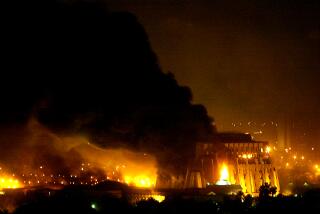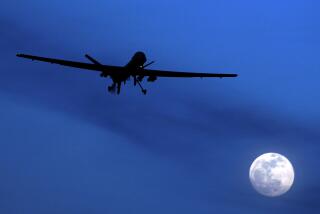Pakistan’s plague is the Taliban, not U.S. drones
I’m not sure if there’s a Pakistani version of Pogo, but there should be, because after what happened there this week, his famous line -- “We have met the enemy, and he is us” -- certainly seems to apply.
Malala Yousafzai, a 14-year-old girl in Pakistan’s Swat Valley, was shot in the head Tuesday while riding on her school bus. The Pakistani Taliban quickly claimed responsibility.
Yousafzai’s crime? She had spoken out against the group and its attempts to ban education for girls. And for that she got a bullet in the head.
On Wednesday, Yousafzai was recovering from surgery and appeared to be out of danger, doctors said. But as outrage spread across the country, the Taliban didn’t back down:
“We are dead against coeducation and secular education,” Taliban spokesman Ihsanullah Ihsan said in a statement released to the media. “Malala was targeted because of her pioneer role in preaching secularism. ... And whom so ever will [do the same] in the future will again be targeted by the [Pakistani Taliban].”
As I read the stories on the shooting of Yousafzai, I thought of The Times’ Op-Ed article last week by Jennifer Gibson headlined “Living with death by drone.” Gibson, a staff attorney with Reprieve, a London-based legal charity that represents dozens of Pakistani drone victims, was part of a Stanford University “research team that visited Pakistan and produced a report titled “Living Under Drones.”
Gibson writes movingly of the terror that ordinary folks in Pakistan feel as U.S. drones fly overhead, targeting insurgents but also killing innocent civilians.
“People in the United States imagine that drones fly to a target, launch their deadly missiles with surgical precision and return to a U.S. base hundreds or thousands of miles away. But drones are a constant presence in the skies above the North Waziristan tribal area in Pakistan, with as many as six hovering over villages at any one time. People hear them day and night. They are an inescapable presence, the looming specter of death from above.
“And that presence is steadily destroying a community twice the size of Rhode Island. Parents are afraid to send their children to school. Women are afraid to meet in markets. Families are afraid to gather at funerals for people wrongly killed in earlier strikes. Drivers are afraid to deliver food from other parts of the country.”
And her conclusion?
“Of course, we should ask whether drones are legal under international law; my view is that they are not. Of course, we should ask whether drones are counterproductive; my view is that they are.”
But here’s what I wonder: What would Gibson say to Malala Yousafzai?
American drones may indeed be a poor solution to the problem of the Taliban in Pakistan. But segments of the Pakistani government, security services and the general population have either supported or ignored the group for a long time.
The price for that policy is that 14-year-old girls who just want to get an education are targeted for assassination. And this isn’t the horrible “honor killings” or acid attacks or whatever that we read about. This is a group attempting to kill a young girl to make a political statement.
How do you deal with such people? Sadly, I say you have to fight fire with fire.
Gibson’s right. People are cowering in terror in their homes in Pakistan, fearful of U.S. drones. But there are many kinds of terror, and in Pakistan, too much of it is home-grown.
So at this point, those terrible, deadly drones help Americans -- and girls like Malala Yousafzai -- sleep at night, knowing that they keep the Taliban from doing the same.
ALSO:
Romney on foreign policy: It’s all about attitude
Electric cars revisited: Yeah, they’re a good deal
California’s future may be in Angela Merkel’s hands
More to Read
A cure for the common opinion
Get thought-provoking perspectives with our weekly newsletter.
You may occasionally receive promotional content from the Los Angeles Times.











